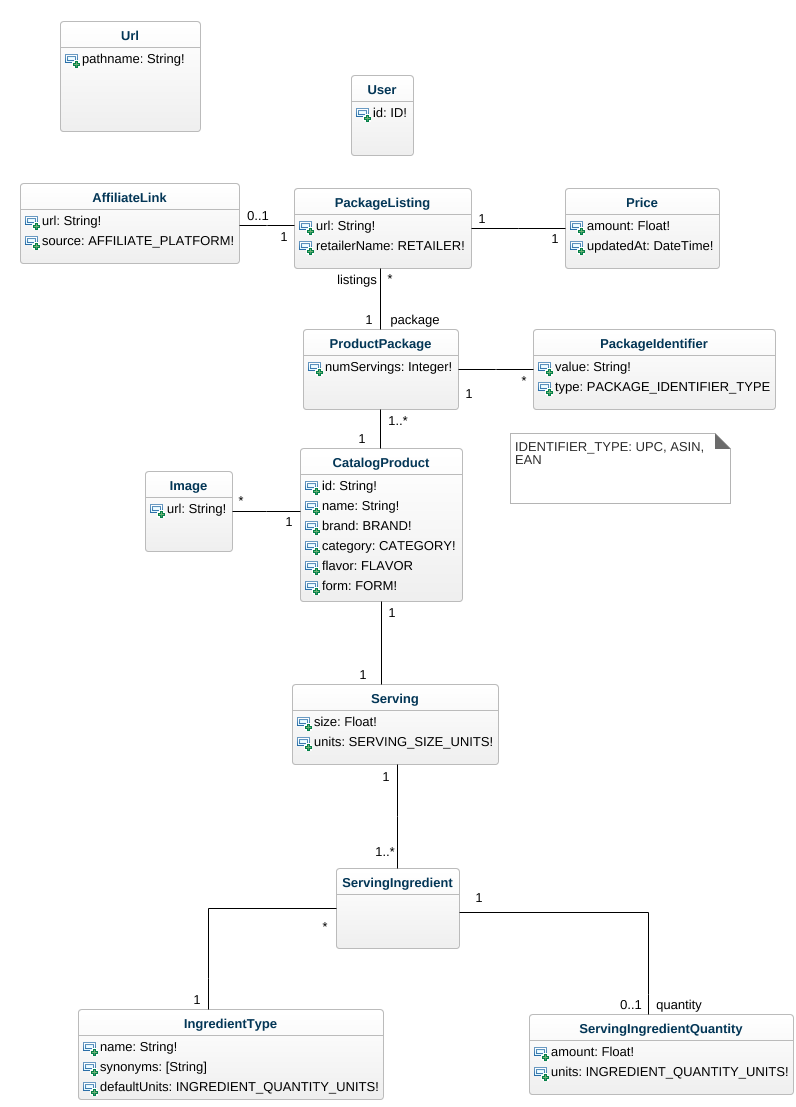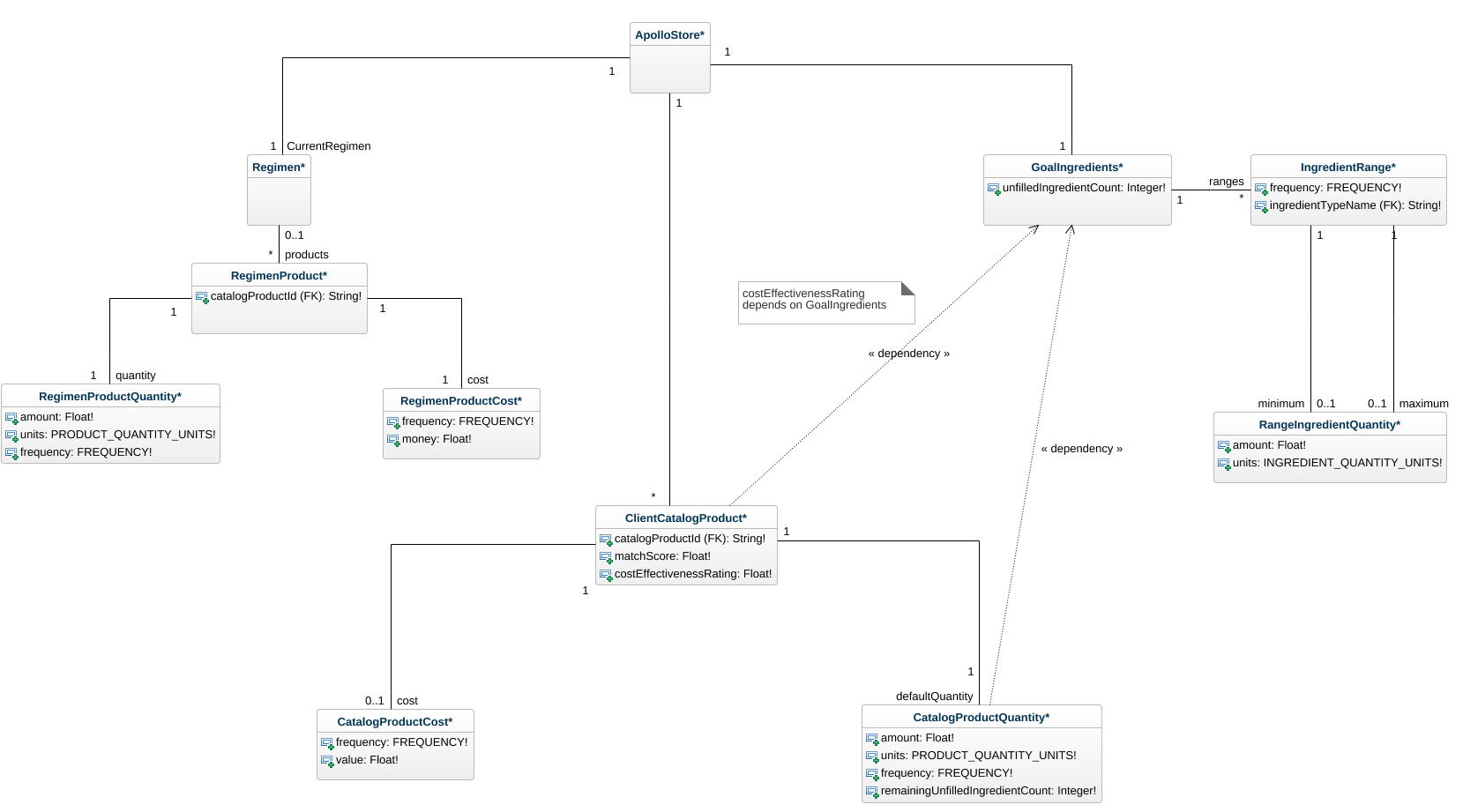The easiest way for weight loss surgery (bariatric) patients to find the correct, cheap vitamins they need after surgery.
See a full demo video here.
The development of the BariBuilder shopping webapp has been paused while we focus on the BariBuilder Blog. During this pause, the webapp has been disabled.
Our mission with BariBuilder is to spread transparent information about supplement products to you, bariatric patients, in order to improve your medical outcomes and lower your costs.
Read more about our mission here, and the problem facing bariatric patients here.
- Table of Contents (you are here)
- Current Project Status
- Technologies & API's Used
- Domain Model
- List of Shortcomings
- Looking Ahead
- Development Notes
BariBuilder is live and publicly available for use in public beta form. You do not need an account to use the service at baribuilder.com. It is under active development by @tadasant.
This monorepo consists of four pieces:
- BariBuilder UI: Front-end React app for BariBuilder.
- BariBuilder API: Back-end configuration for Graphcool.
- BariBuilder Aggregator: Lambda functions to keep catalog up-to-date.
- GraphQL Scripts: Various database data-wrangling utilities (i.e. SQL scripts analog).
The baribuilder-ui directory contains the Single Page App (SPA) built with React. Notable technologies used within the SPA:
Other API's & SaaS's integrated:
- Hosted on Netlify
- Mixpanel for event-based analytics
- Segment for managing events
- HotJar for studying users, collecting feedback
- Misc. tools: Drift, Mailchimp, Typeform, Facebook Pixel
The baribuilder-api directory contains the configuration used for the application backend, which leverages Graphcool's hosted solution.
The domain model is defined in the GraphQL schema files at baribuilder-api/model. See Domain Model section for an easy-to-digest write-up.
Eventually, this hosted GraphCool solution will be ripped out and replaced with a self-managed Prisma setup.
The baribuilder-aggregator directory contains the lambda functions used to manage automated data wrangling processes.
At the moment, the only process in place is a price updater, which uses Viglink's API to grab and upload updated product prices from Amazon every 45 minutes.
The gql-scripts directory contains data wrangling scripts for various Graphcool operations. These are meant to be invoked manually from a local machine. Think of them as analogous to SQL scripts.
Pictured is a UML diagram of the BariBuilder API's GraphQL schema (which Graphcool translates into a SQL schema).
The core of the model starts with CatalogProduct in the middle. We have a row here for every product we offer for sale/analysis on BariBuilder. A Catalog Product may have zero or more associated images. As you can see on a Nutrition/Supplement Facts label, every Product has details on what a Serving is for that product. Looking at the line-by-line of that label, you would see one or more ServingIngredients. Each Serving Ingredient is composed of at least an IngredientType (e.g. Vitamin A) and, optionally, some quantity. Sometimes ingredients have only trace quantities, so the quantity is unlisted.
Looking at the other side of CatalogProduct, we have the domain related to retail operations. Every product comes in some sort of ProductPackage, where you'll find a bunch of tablets or units of that product being sold in a bottle. This Package typically has some PackageIndentifier, like a UPC code or ASIN code. Each Package can be sold in zero or more places on the internet, hence the package is associated to listings. A listing has a price at a given time, and we may also have stored a specific AffiliateLink to that listing.
The orphaned URL object is a hacky datastore for our link shortener that we use for generating shareable URLs with long query parameters. And the User object is as-of-yet unused.
Pictured is a UML diagram of the BariBuilder UI's model insofar as a user has loaded and is using the application.
None of this data is (currently) persisted, but is the client's view of the world during a user's session with the single page application.
The data represented in this model is currently managed using Apollo's local state management system. This is certainly not the optimal way to do it. It should be managed on the server side - and that is the plan once migration from Graphcool to Prisma is complete.
ApolloStore refers to a single client's instance of the local store. Every local store has one CurrentRegimen (you can think of this as their "shopping cart"), which is composed of zero or more products. Each product has some quantity and total cost (which changes based on the quantity). Cost is generally a nontrivial concept because the "cost" of a vitamin product is not simply the sticker price - it is the amount of money it will cost them over a period of time assuming the consumption of a certain quantity.
Every local store also has a list of ClientCatalogProducts. The number of items in this list is equal to the number of CatalogProducts on the API's side. The intent here is to contextualize the entire catalog for this specific user. So every ClientCatalogProduct has potential cost for this user given some specific defaultQuantity.
Lastly, each local store has a set of GoalIngredients (set on the /goals page in the app). These Goal Ingredients are composed of zero or more ranges, each of which has some minimum quantity and maximum quantity.
I regret almost none of the decisions that led to the shortcomings below to-date. This is the only application of its kind, especially in the bariatric space - so we had no idea how close we were to delivering real value to consumers during the development of the application. It did not make sense to follow time-consuming, stable engineering best practices in many cases, except insofar as they would help us test our business assumptions more rapidly. Speed and iteration were of principal concern. Long term technical debt was not.
There are way too many client-side operations going on. BariBuilder eats a lot of CPU cycles (especially on slow machines), and the SPA is noticeably laggy when it has to recalculate the entire catalog's user-contextual pricing information. This occurs every time the user adds or removes a product from his/her current regimen (i.e. shopping cart). This has also made for an extremely messy Apollo Local State (see model, and its weird dependencies, above). The solution here is to break this out into an asynchronous server-side operation, which will be possible when the migration from Graphcool to Prisma is complete.
Data is of questionable reliability. The data came almost exclusively from one round of untrained Mechanical Turk workers. There was no QA step beyond the occasional inconsistencies we stumbled across during the development of the application.
There are no (ZERO) tests. This was a conscious decision. I do have concerns that at some point this will slow down development speed if things break every time I do a push, but I have reasonable faith that this won't happen until much later - after we've validated some initial business assumptions and probably pivoted a few times. My confidence stems from the way I've tied the data model through the UI end to end. The domain model is encoded in a GraphQL schema with Graphcool, which I introspect to generate a set of TypeScript types. I then use those TypeScript types all throughout the UI. This has very reliably created almost no data-related issues. There may be functionality bugs, but to date they've all been tolerable or able to be worked around by the user.
Migration from Graphcool to Prisma. Graphcool is no longer under active development, and the team responsible for Graphcool has since shifted its focus to Prisma. Prisma offers a much more flexible to setting up a GraphQL server. In addition to the Prisma setup, I will be setting up an apollo-server Node.js proxy server that stands between Prisma and the UI in order to facilitate the session-based computations as described in List of Shortcomings above.
Revamping of business model. Affiliate revenue doesn't reel in customers well, and generally doesn't have much of a place in a space that is oriented around consistent, recurring purchases. BariBuilder needs to become a true e-commerce platform that facilitates transactions on-site: starting with dropshipping, and eventually retail through wholesale. This will additionally enable unique, value-add features like tracking vitamin intake based on actual shopping history, a one-stop view of all your vitamin history, etc.
See DEVELOPMENT.md
.png?raw=true)


